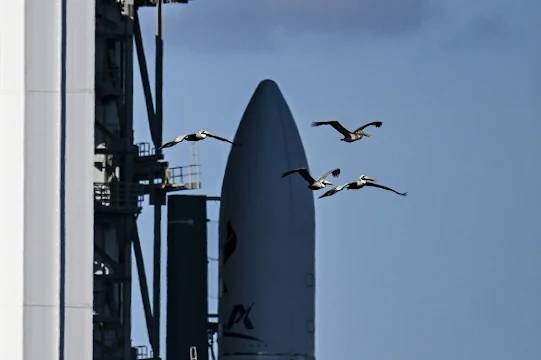America's First Moon Landing Since Apollo Led by Astrobotic's Peregrine Lander
In a historic event set to unfold early Monday, the United States is poised to return to the Moon after over five decades, with a significant twist — this time, private industry is spearheading the mission. The United Launch Alliance's (ULA) cutting-edge Vulcan Centaur rocket is set to launch Astrobotic's Peregrine Lunar Lander from Cape Canaveral Space Force Station at 2:18 am, marking a pivotal moment in space exploration.
Astrobotic, a Pittsburgh-based company, is at the forefront of this lunar endeavor. Peregrine, the lunar lander, is scheduled to touch down on the Moon's mid-latitude region, Sinus Viscositatis (Bay of Stickiness), on February 23. John Thornton, Astrobotic's CEO, expressed the significance of leading America back to the Moon, emphasizing the honor of this monumental mission.
The last time a spacecraft attempted a soft landing on the Moon was during the Apollo era. However, this time, the initiative is driven by the private sector, aligning with NASA's Commercial Lunar Payload Services (CLPS) program. This shift represents a strategic move by the United States to stimulate a lunar economy and reduce mission costs, aiming for a more sustainable and efficient approach to space exploration.
The National Aeronautics and Space Administration (NASA) has invested over $100 million in Astrobotic to carry out this mission, underlining the agency's commitment to fostering collaboration with private enterprises. Houston-based Intuitive Machines is another contracted company set to launch in February, with plans to land near the Moon's south pole.
NASA's Joel Kearns, deputy associate administrator for exploration, highlighted the potential for more cost-effective and rapidly executed lunar missions under the CLPS program, which is crucial for preparing for the Artemis program. Artemis, spearheaded by NASA, aims to return astronauts to the Moon later this decade, laying the groundwork for future missions to Mars.
Landing on the Moon remains a formidable challenge, with a history of nearly half of all attempts ending in failure. The absence of an atmosphere complicates the descent, requiring precise navigation through challenging lunar terrain using only thrusters to slow the spacecraft's descent.
The ULA's Vulcan Centaur, making its maiden voyage, adds an extra layer of anticipation. Despite being the first launch for Vulcan, ULA boasts a stellar track record with a 100 percent success rate in over 150 prior launches. The new rocket is designed to have reusable first-stage booster engines, contributing to potential cost savings and advancing the feasibility of future missions.
Onboard Peregrine, alongside a suite of scientific instruments probing radiation and surface composition, is a unique payload. This includes a shoebox-sized rover from Carnegie Mellon University, a physical Bitcoin, and controversially, cremated remains and DNA. Among the notable names are Star Trek creator Gene Roddenberry, sci-fi luminary Arthur C. Clarke, and even a dog.
The inclusion of such personal artifacts has stirred controversy, particularly with the Navajo Nation, the largest Indigenous tribe in America. They argue that sending sacred remains to the Moon is disrespectful to their cultural beliefs. Despite their objections and a last-ditch meeting with White House and NASA officials, the payload remains unchanged.
As the mission progresses, the Vulcan rocket's upper stage will carry more late cast members of Star Trek, along with hair samples from presidents George Washington, Dwight D. Eisenhower, and John F. Kennedy. This eclectic mix of cargo reflects the diverse and multifaceted nature of this historic lunar mission, blending cutting-edge science with tributes to cultural and historical figures.
In the early hours of Monday, eyes around the world will be on the Cape Canaveral Space Force Station as the private sector takes a giant leap for mankind, leading America back to the Moon and setting the stage for a new era of lunar exploration.
From news to politics, travel to sport, culture to Entertainment news – Ghlense.net has a host of articles to suit your interests. To find the stories you want to read, and more, click here








Post a Comment